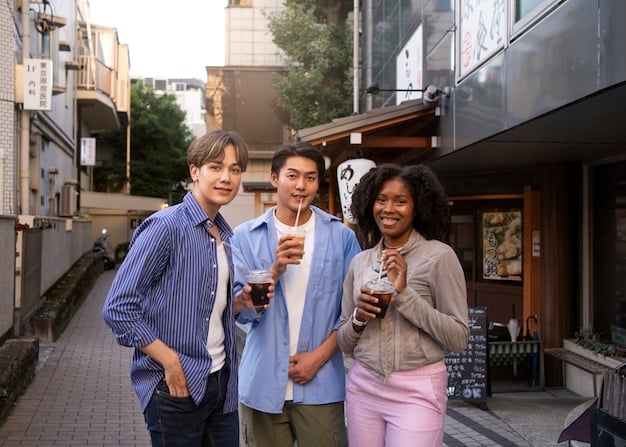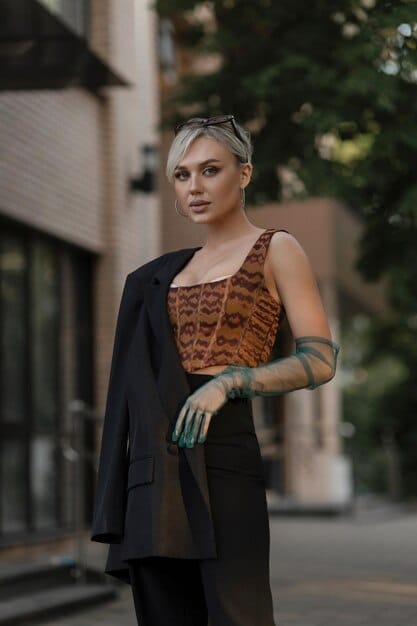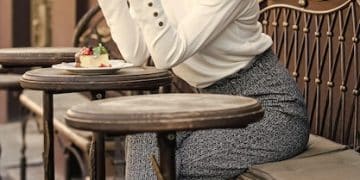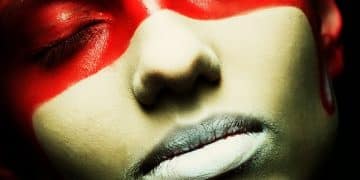Japanese Dramas’ Impact on US Fashion Trends: 2025 Analysis

The influence of Japanese dramas on US fashion trends by 2025 is substantial, subtly merging traditional aesthetics with modern streetwear, and shaping a distinct, albeit niche, style vocabulary. This cross-cultural exchange, driven by increasing digital accessibility and a growing appreciation for Japanese aesthetics, highlights how entertainment media functions as a powerful conduit for global cultural diffusion.
The intricate tapestry of global fashion is constantly rewoven, influenced by an eclectic mix of cultural phenomena. Among these, the burgeoning popularity of Japanese dramas, or J-dramas, has emerged as an understated yet potent force. As we look towards 2025, understanding The Influence of Japanese Dramas on US Fashion Trends: A 2025 Analysis offers a fascinating glimpse into how cross-cultural media consumption shapes our everyday style choices.
The burgeoning reach of J-dramas in the US cultural landscape
The digital age has fundamentally reshaped how entertainment traverses borders. Far from being niche content for a select few, Japanese dramas have steadily gained traction in the US, moving beyond traditional anime fan bases to capture a broader audience. Streaming platforms like Netflix, Crunchyroll, and others have democratized access, presenting these narratives to millions of American viewers.
This increased accessibility means that visual cues, including fashion, are more readily absorbed. Viewers are exposed not just to captivating storylines and complex characters, but also to a diverse array of costume designs that reflect contemporary Japanese aesthetics, traditional elements, and innovative styling. This exposure, unlike traditional fashion magazines or runway shows, is organic and embedded within a narrative, making the styles protagonists wear feel aspirational and attainable.
From niche to mainstream recognition
While J-dramas may not rival the mainstream ubiquity of Hollywood productions, their influence is undeniable within specific demographics. Younger audiences, digital natives who are accustomed to diverse content, are particularly drawn to them. These dramas often explore universal themes through a distinctly Japanese lens, resonating with viewers who seek fresh perspectives and storytelling approaches. Beyond the plot, the visual artistry, including fashion, plays a crucial role in creating an immersive experience.
- Increased availability on major streaming platforms.
- Engagement with diverse and younger demographics.
- Authentic portrayal of contemporary Japanese life and fashion.
Moreover, the subtle integration of fashion into character development allows viewers to connect with the styles on a deeper, more personal level. It’s not just about what’s trendy, but what defines a character, and inevitably, this emotional connection fosters a desire to emulate those styles off-screen. This phenomenon is a powerful driver of trends, as viewers unconsciously, or consciously, incorporate elements seen in their favorite shows into their own wardrobes.
By 2025, this growth is expected to solidify, with J-dramas becoming a more recognized source of cultural and stylistic inspiration, especially as media consumption continues to fragment and globalize. The subtle yet persistent presence of these narratives is laying the groundwork for a broader appreciation of Japanese fashion sensibilities within the US. The fashion presented in these dramas is often a blend of practicality and understated elegance, characteristics that appeal to a growing segment of American consumers seeking comfort and sophistication.
Key stylistic elements impacting US fashion from J-dramas
Japanese dramas offer a rich palette of fashion influences, from casual everyday wear to avant-garde ensembles. While not all elements will transfer directly, certain stylistic themes resonate particularly well with American audiences and are poised to grow in popularity by 2025. This includes an emphasis on layering, the thoughtful use of accessories, and a preference for understated sophistication over overt branding.
One prominent element is the art of layering. J-dramas frequently showcase characters wearing multiple light layers, creating depth and texture. This approach is both practical and aesthetically pleasing, allowing for flexibility in varying temperatures and adding visual interest to simple outfits. American fashion, which often prioritizes simplicity, can benefit from this nuanced approach to dressing.
The subtlety of “normcore” and elevated basics
Many J-dramas feature characters in what could be described as an elevated “normcore” aesthetic: well-fitting, high-quality basics that are subtly styled rather than relying on loud logos or flashy designs. This aligns with a growing movement in US fashion towards sustainability and conscious consumption, where investment in versatile, timeless pieces is preferred over fast fashion trends.
- Oversized silhouettes: Comfortable yet stylish, often seen in coats, sweaters, and shirts, offering a relaxed elegance.
- Androgynous styling: A blurring of traditional gender lines in clothing, appealing to a more fluid and inclusive fashion sensibility.
- Attention to detail: Small, thoughtful details like unique buttons, stitching, or subtle graphic prints that elevate basic garments.
- Natural textures and muted palettes: A preference for fabrics like linen, cotton, and wool in earthy tones, grays, and soft pastels, conveying a sense of calm and sophistication.
The emphasis on comfort in J-drama fashion is also a major draw. Characters often wear clothes that appear practical for everyday life, whether it’s navigating bustling city streets or relaxing at home. This practicality, combined with an undeniable sense of style, offers a refreshing alternative to the often uncomfortable or impractical trends seen elsewhere. This blend of form and function perfectly aligns with the modern American lifestyle where ease of movement and comfort are increasingly prioritized.
By 2025, expect to see more deliberate layering, a wider acceptance of oversized but tailored pieces, and an increased appreciation for the subtle nuances that define Japanese street style and drama aesthetics. The concept of “less is more,” but with a focus on quality and unique details, will continue to gain traction.
How J-drama character styling informs US consumer choices
The emotional connection viewers form with J-drama characters is a powerful conduit for fashion influence. When audiences invest in a character’s journey, they often unconsciously absorb elements of their persona, including their style. This goes beyond simple emulation; it becomes a form of aspirational identity. Shoppers in the US might not explicitly say, “I want to dress like [J-drama character],” but the visual imprints are undeniably there.
For instance, a character known for their intellectual prowess might consistently wear sophisticated, minimalist clothing, influencing viewers to seek out similar pieces that convey intelligence and refinement. Conversely, a free-spirited character might inspire an interest in eclectic layering or vintage-inspired accessories. This deep psychological engagement makes J-drama fashion influence particularly potent, as it stems from narrative and emotional resonance rather than just a fleeting trend.
The emergence of a “J-drama aesthetic” subculture
While not a mainstream phenomenon yet, a distinct subculture interested in a “J-drama aesthetic” is growing within the US. This group actively seeks out clothing and accessories reminiscent of their favorite characters and shows. Online communities, fashion blogs, and social media platforms facilitate this exchange, with members sharing where to find specific items or how to replicate certain looks.
- DIY and thrifting inspiration: Encouraging viewers to create or find similar looks on a budget, fostering creativity.
- Independent designer growth: Supporting smaller brands that align with the J-drama aesthetic, promoting uniqueness over mass appeal.
- Social media sharing: Platforms like Instagram and TikTok become avenues for showcasing J-drama inspired outfits and connecting with like-minded individuals.

Furthermore, the subtle yet impactful use of specific brands or fashion staples within J-dramas can create a ripple effect. While overt product placement is less common than in some Western media, the organic integration of an iconic bag or a distinctive shoe can elevate its status in the minds of viewers. By 2025, this subcultural interest is expected to grow, influencing smaller fashion retailers and independent designers who cater to this specific aesthetic. The organic nature of this influence, rather than top-down marketing, makes it a powerful and authentic force in evolving fashion choices.
This nuanced impact on consumer choices reflects a shift from purely trend-driven buying to values-driven consumption, where clothing choices are informed by personal narratives and aesthetic preferences cultivated through media exposure. The emphasis on individuality and practical elegance, often seen in J-dramas, resonates with a desire for authenticity in personal style.
The role of social media and fashion influencers in diffusing J-drama styles
Social media platforms have become the primary accelerators for the diffusion of fashion trends. For J-dramas, this is particularly true, as fans and fashion enthusiasts use these channels to dissect, share, and replicate styles seen on screen. TikTok, Instagram, and YouTube are not just places for consumption, but active arenas for inspiration and creation.
Fashion influencers, both large and micro, play a pivotal role. As they embrace and showcase J-drama inspired looks, they validate these aesthetics for their followers, making them more accessible and desirable. These influencers often provide direct links to similar clothing items, styling tips, and DIY approaches, effectively bridging the gap between on-screen imagery and real-world application. Their authenticity and relatability makes their recommendations far more impactful than traditional advertising.
User-generated content as a trend catalyst
Beyond traditional influencers, user-generated content (UGC) is a significant driver. Fans post “get the look” videos, recreate iconic outfits, or simply share their personal interpretations of J-drama fashion. This creates a vibrant, participatory ecosystem where trends emerge from the ground up, rather than being dictated from the top down. This democratized approach to trend-setting is crucial for the subtle and organic spread of J-drama influences.
- TikTok challenges: Featuring specific J-drama outfits or styling ideas, encouraging mass participation.
- Instagram “Outfit of the Day” (OOTD): Posts showcasing how individuals integrate J-drama elements into their daily wear.
- YouTube styling tutorials: Guides on how to achieve specific character looks or general J-drama fashion aesthetics.
By 2025, the synergy between J-drama content and social media platforms is expected to intensify. As more US viewers discover these shows, the volume of related fashion content will naturally increase, creating a stronger feedback loop. This digital ecosystem fosters an environment where diverse fashion influences can thrive, moving from niche interests to more widespread adoption. The visual nature of platforms like Instagram and TikTok is particularly effective in transmitting fashion ideas, allowing users to quickly grasp and adapt styles they find appealing.
The speed at which trends can travel and evolve on these platforms means that even subtle shifts in J-drama styling can gain momentum quickly. This dynamic interplay between content creators and consumers ensures that the influence of Japanese dramas on US fashion will continue to be a living, evolving phenomenon, driven by collective creativity and shared interest.
Predicting specific J-drama inspired trends for 2025 in the US
Pinpointing exact trends years in advance is challenging, but based on current trajectories and the inherent qualities of J-drama fashion, certain stylistic elements are highly likely to see increased adoption in the US by 2025. These predictions lean into the subtlety, practicality, and thoughtful aesthetic often seen in Japanese media, suggesting a move away from louder, statement-driven fashion.
One foreseeable trend is the elevated casual wear. Forget sloppy sweats; think well-tailored loungewear, stylish knit cardigans, and relaxed-fit trousers that prioritize comfort without sacrificing sophistication. This reflects a post-pandemic shift towards more comfort-centric dressing that still looks polished enough for public life, a balance often perfected in J-drama character wardrobes.
The rise of “effortless chic” commuter wear
Japanese dramas frequently showcase characters navigating urban environments with an air of effortless chic. This translates to practical yet stylish outerwear (e.g., trench coats, oversized blazers), comfortable footwear (e.g., sleek sneakers, loafers), and functional bags. This “commuter chic” aesthetic, offering versatility and understated elegance, will appeal to American professionals seeking comfort and style in their daily grind.
- Layered neutrals: Monochromatic or analogous color schemes in natural tones, emphasizing texture over bold prints.
- Subtle asymmetry: Hems, necklines, or closures that offer a slight, unexpected twist to classic garments.
- Workwear-inspired elements: Durable fabrics and utilitarian details (e.g., cargo pockets, reinforced stitching) integrated into fashionable pieces.
- Thoughtful accessorizing: Minimalist jewelry, headbands, or unique eyewear used to complete a look without overpowering it.

Another area of likely influence is the embrace of gender-neutral or fluid fashion. Many J-dramas feature characters who dress without strict adherence to traditional gender norms, focusing on silhouette, comfort, and personal expression. This aligns with a growing movement in the US towards more inclusive and less restrictive ways of dressing, fostering a more diverse fashion landscape. By 2025, these influences are expected to manifest not as direct replicas, but as subtle shifts in fabric choices, silhouettes, and color palettes, enriching the existing US fashion lexicon with thoughtful, understated elements.
The influence will be more about a refined approach to dressing rather than a wholesale adoption of specific items. It’s about an aesthetic philosophy that emphasizes functionality, comfort, and an understated elegance often found in everyday Japanese fashion. This evolution suggests a more mature and nuanced appreciation for global styles.
Challenges and opportunities for J-drama fashion in the US market
While the influence of Japanese dramas on US fashion is growing, it’s not without its challenges. The primary obstacle is the inherent difference in cultural context and body types. Japanese fashion often caters to slimmer, more petite frames, and some styles may not translate directly to the diverse body types prevalent in the US. Moreover, the cultural nuances associated with certain garments in Japan might be lost or misinterpreted when adopted in a different societal context.
Another challenge lies in scaling the influence. J-dramas, while gaining popularity, are still a niche compared to mainstream Western entertainment. For their fashion influence to move beyond subcultures, it requires greater visibility and consistent exposure to a wider audience. This naturally takes time and continued investment in distribution.
Opportunities for cross-cultural fashion integration
Despite these challenges, significant opportunities exist for fostering a broader appreciation of J-drama inspired fashion. Collaborations between US and Japanese designers, or collections directly inspired by popular J-dramas, could bridge the gap and introduce these aesthetics to a wider commercial audience. Retailers could create curated sections featuring “J-drama inspired” collections, making it easier for consumers to access these styles.
- Collaborative clothing lines: Partnering US and Japanese brands for unique collections.
- Pop-up shops: Temporary retail experiences featuring J-drama related fashion.
- Digital lookbooks: Showcasing translated styles for diverse US body types and preferences.
The opportunity exists in the authenticity and freshness that J-drama fashion brings. It offers an alternative to dominant Western trends, providing a unique blend of tradition and modernity, comfort and style. By 2025, successful integration will likely come from brands and designers who understand how to adapt Japanese aesthetics for a US market, rather than simply replicating them. This means finding the essence of the style—the emphasis on quality, subtle design, and comfort—and translating it into garments that resonate with American consumers while respecting cultural origins. The potential for a truly hybridized fashion landscape, where diverse global influences can thrive, is immense.
Ultimately, the challenge lies in mindful adaptation, ensuring that the unique aesthetic of J-drama fashion is celebrated and interpreted respectfully for a global audience. This approach will maximize its potential influence while avoiding cultural appropriation and ensuring genuine appreciation.
| Key Point | Brief Description |
|---|---|
| 📺 J-Drama Accessibility | Increased streaming availability drives content exposure to diverse US audiences. |
| 👖 Stylistic Elements | Emphasis on layering, oversized silhouettes, and elevated basics resonate with US trends. |
| 🤳 Social Media Impact | Influencers and UGC accelerate the diffusion of J-drama inspired looks. |
| ⚖️ Challenges & Opportunities | Cultural adaptation and body diversity are key; collaborations offer growth. |
Frequently asked questions about J-drama fashion influence
▼
Japanese drama fashion appeals to US audiences for its unique blend of comfort, practicality, and understated elegance. It often features sophisticated layering, quality basics, and subtle detailing that resonate with a desire for effortless yet polished looks. This aesthetic offers a refreshing alternative to more overtly branded or fast-fashion trends, promoting a sense of individuality and timelessness that many US consumers seek in their personal style choices.
▼
While various J-drama genres contribute to fashion trends, slice-of-life dramas, romantic comedies, and workplace dramas tend to have a more direct impact on everyday fashion. These genres often feature characters in realistic, relatable contemporary attire, making their styles seem more attainable and inspiring for viewers. Period dramas, while visually rich, typically influence niche fashion elements rather than mainstream trends, focusing on historical accuracy.
▼
Increased accessibility through streaming platforms such as Netflix and Crunchyroll is crucial for J-drama fashion influence. When these dramas are readily available, more US viewers are exposed to the distinct Japanese aesthetics, costumes, and character stylings. This widespread exposure allows visual trends to be absorbed more effectively by a broader audience, fostering emulation and driving interest in related fashion choices.
▼
While J-drama fashion’s influence is growing, it is more likely to remain a significant subcultural or niche trend by 2025 rather than a dominant mainstream one. Its impact will primarily be seen in subtle shifts in consumer preferences for layered looks, quality basics, and comfortable everyday wear. It will continue to inspire specific demographics and independent brands, contributing to a more diverse and globally aware fashion landscape.
▼
Social media influencers are vital in diffusing J-drama fashion trends by showcasing and validating these styles for their followers. On platforms like TikTok and Instagram, they provide styling tips, link similar items, and create “get the look” content, making J-drama aesthetics more accessible and desirable. Their authentic engagement fosters a community of enthusiasts who actively seek out and integrate these styles into their own wardrobes, accelerating trend adoption.
Conclusion
The subtle yet persistent influence of Japanese dramas on US fashion trends is a compelling narrative of cultural exchange in the digital age. As we analyze the landscape of 2025, it’s clear that J-dramas are increasingly serving as a silent, yet powerful, conduit for stylistic inspiration. Beyond the captivating plots and compelling characters, these shows offer a visual lexicon of nuanced fashion, characterized by an emphasis on comfort, thoughtful layering, and an elegant simplicity that resonates deeply with a growing segment of American consumers. While not poised to overtake mainstream Western trends, the contribution of J-drama aesthetics will be felt in the heightened appreciation for quality basics, the embrace of fluid silhouettes, and a more considered approach to everyday dressing. This evolution signifies a maturing fashion sensibility in the US, one that is increasingly open to global influences and appreciates the quiet sophistication that Japanese screen culture so effortlessly portrays, enriching our collective wardrobe with a touch of understated global chic.





